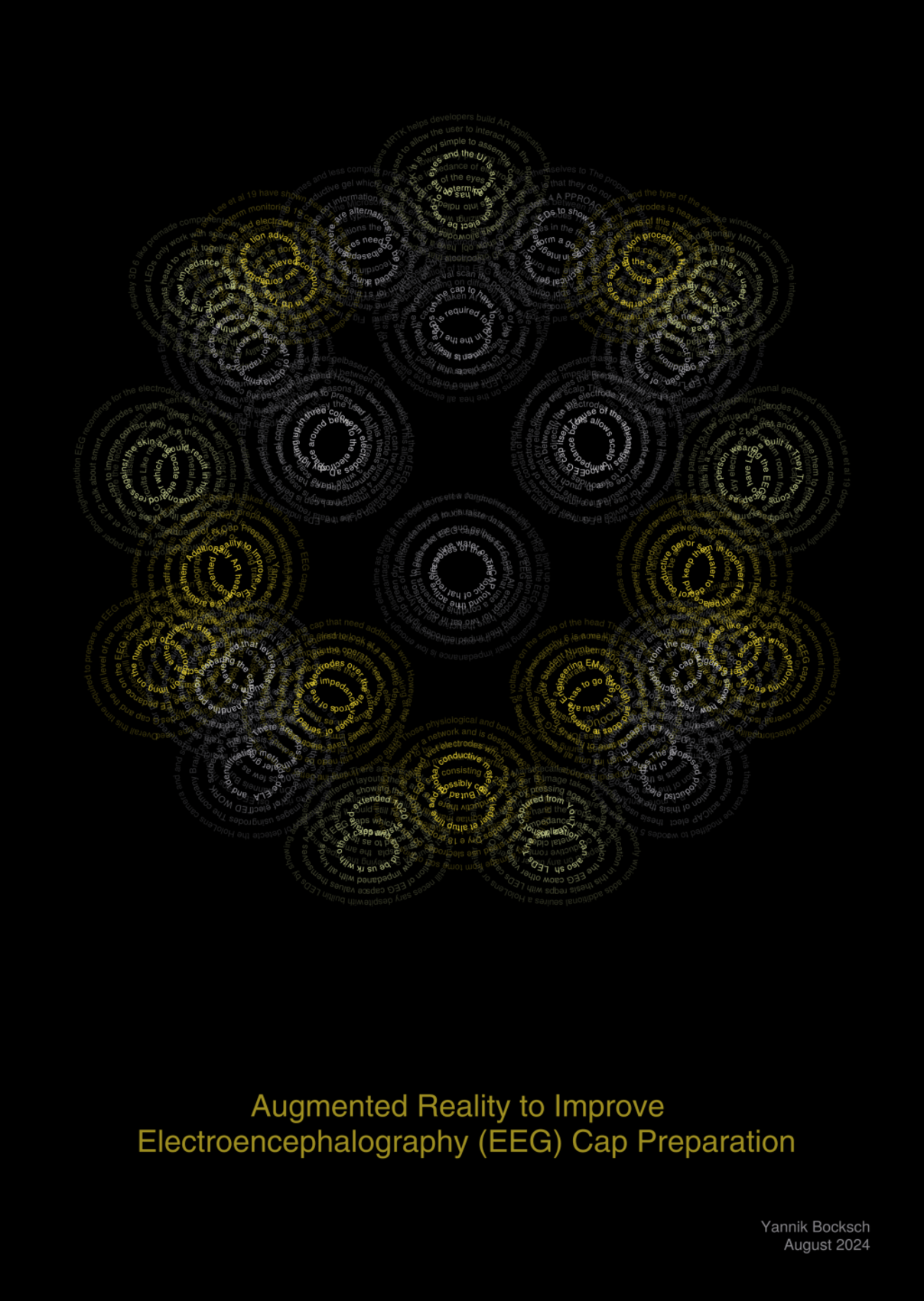Augmented Reality to Improve Electroencephalography (EEG) Cap Preparation
for Yannik Bocksch
This thesis explores the development of an Augmented Reality (AR) application aimed at improving the EEG cap preparation process. The Thesis Art piece visualizes the electrode mapping process using AR and reflects on its potential impact on improving work conditions in EEG applications.
The Creation Process
For this piece, Benedikt utilized ThesisArt.jl, finalizing its first public version of the open source package in the process. The visualization draws directly from Bocksch’s thesis, particularly one figure of his thesis which presents a thresholded view of the electrode setup from the experimenter’s perspective. After an artistic translation, this artwork captures both the technical rigor and conceptual innovation of the original research.
Artistic Concept
The design mirrors the electrode placement while incorporating artistic adjustments to enhance the visual impact. A key modification was the duplication of electrodes on the brain, introducing a layered effect that emphasizes the complexity of EEG mapping. Despite these creative liberties, the precise positioning of the electrodes remains true to the original data, reinforcing the connection between science and art. The result is an abstract yet highly structured depiction of EEG technology and its potential for improvement through Augmented Reality.
“I took a bit more artistic freedom by duplicating the electrodes on the brain. The result speaks for itself”
Benedikt Ehinger
Personal Reflection
This Thesis Art piece allowed for an exploration of how scientific visualization can loosen and extend technical specifications to provide compelling art. Through this visualization, the often-invisible manual labor of EEG research might become more tangible and engaging.
